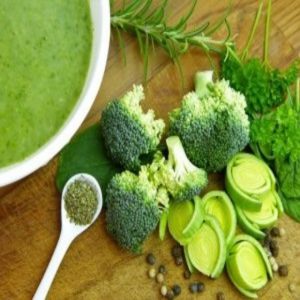Broccoli benefits the bowels

Is broccoli on your Thanksgiving menu? A new study investigating its protective effects in the intestine suggests that maybe it should be.

Broccoli and Brussels sprouts often get a bad rap. But if you are trying to encourage your friends and family to eat these unfairly-maligned vegetables this holiday season, a recent study might help. Writing in the Journal of Functional Foods, researchers report that compounds within these vegetables act on the aryl hydrocarbon (AH) receptor, a transcription factor with a variety of roles, including the regulation of metabolizing enzymes. By activating the AH receptor locally in the intestine, cruciferous vegetables may help maintain a healthy digestive system.
Researchers knew that cruciferous vegetables protected against certain intestinal disorders, but the pathways responsible were unclear. “There are a lot of different chemicals in broccoli—I mean a lot—and there’s a number of them that have been shown to have pharmacologically positive attributes,” said Gary Perdew of The Pennsylvania State University, senior author of the study. “So the question becomes which one, in the context of actually consuming broccoli, is giving you the positive effect.”
The researchers suspected that the AH receptor could be a key part of broccoli’s health benefits. Although primarily known as a regulator of enzymes such as cytochrome P450, the AH receptor also has endogenous functions that affect the intestine. For example, AH agonists have beneficial effects in the gut, and AH-null mice are susceptible to intestinal disorders. Importantly, cruciferous vegetables contain indole glucosinolates, which degrade into ligands of the AH receptor, suggesting that this pathway could explain the positive effects of broccoli consumption on the gut.
In order to test this hypothesis, Perdew’s team examined two strains of mice: one that expressed a high-affinity version of the AH receptor, and one that expressed a low-affinity version. They gave the mice either a standard diet or a diet supplemented with 15% broccoli for 24 days and then they chemically induced colitis (inflammation of the colon).
For mice expressing the high-affinity AH receptor, the broccoli diet elicited much greater local activation of the AH receptor in the intestines than in mice on a standard diet. Moreover, in this strain, broccoli protected against colitis: the broccoli-fed mice lost less weight and showed less inflammation in the spleen and a lower gastrointestinal disease activity index.
In contrast, mice expressing the low-affinity AH receptor showed far lower AH receptor activation, even after eating broccoli. And for this strain, the broccoli diet did not produce a sustained protective effect against colitis. “We showed that we were getting preferential induction of the AH receptor and that broccoli was only protective in the strain in which the receptor was activated,” said Perdew.
Activation of the AH receptor has several downstream effects that could potentially account for the protection conferred to mice with high-affinity AH receptors. According to Perdew, the best evidence is that AH receptor activation increases expression of interleukin-22 (IL-22), which helps maintain epithelial cells in the intestinal lining. However, other effects of AH receptor activation may also be important.
The research suggests that eating broccoli or other cruciferous vegetables could potentially benefit patients with inflammatory intestinal disorders—but there is a catch. The quantity of broccoli fed to the mice would translate to around three-and-a-half cups per day for the average human. Although this level of consumption may be achievable, patients with these disorders are often advised to avoid fibrous vegetables such as broccoli as they can exacerbate symptoms.
However, Perdew is optimistic that there are ways around this limitation. Blending broccoli before consuming it may help. Indole glucisonolate levels also vary considerably between cruciferous vegetables, a category which also includes kale, cabbage, and cauliflower. “You can choose cultivars that have higher levels and you wouldn’t have to eat so much to get the therapeutic effect,” he said.
Charlotte Esser of the Leibniz Research Institute for Environmental Medicine, who was not involved in the research, agreed with the approach for testing a diet of whole broccoli, rather than individual constituent compounds. “With nutrition papers, the general public tends to jump to quick translational conclusions, but the dose of anything is important,” she said. “The paper does not jump to conclusions quickly, but explores several options that might explain the findings.”